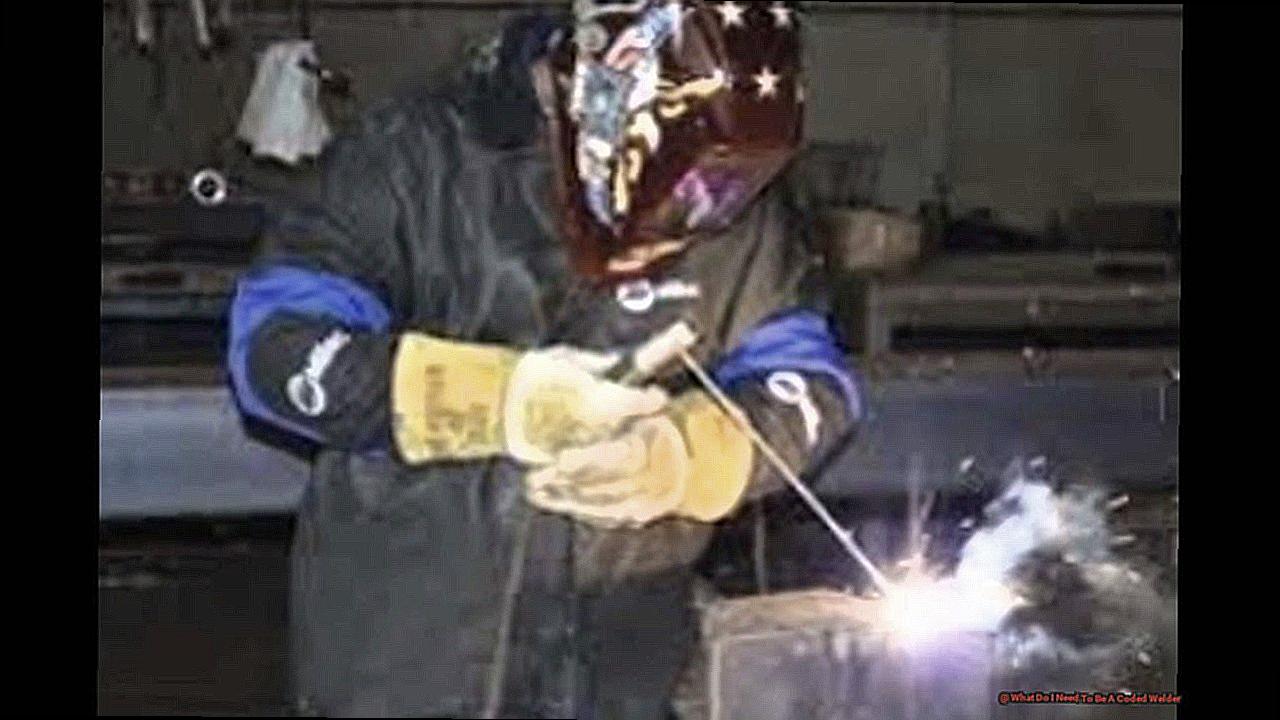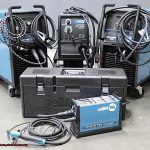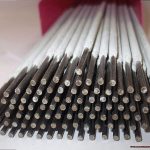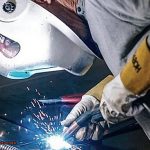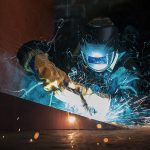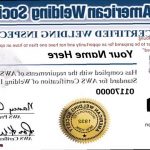As a skilled welder, you understand the importance of choosing the right welding rod for each project. And when it comes to versatility and reliability, there’s one rod that stands out above the rest – the 8018 welding rod.
With a history spanning decades and a wide range of applications in various industries, this little powerhouse has earned its place as a go-to choice for welders everywhere. From structural steel to pressure vessels, the 8018 welding rod can handle any task with ease.
So let’s take a closer look at this indispensable tool and discover why it should be a staple in your welding arsenal.
Properties of E8018 Welding Rods
Contents
Look no further than E8018 welding rods – a top choice for many professionals when it comes to high-strength steel. As an expert in welding, you understand the significance of utilizing the proper tools to achieve successful welds. And E8018 welding rods possess unique properties that set them apart from others in the market.
First and foremost, these welding rods fall under the American Welding Society (AWS) Class E8018-B8, indicating their minimum tensile strength of 80,000 pounds per square inch (psi). This makes them ideal for welding high-strength steels in diverse positions and environments.
But what truly makes these rods stand out is their iron powder-type coating with active flux. This coating provides exceptional protection against atmospheric contamination, minimizing the risk of hydrogen embrittlement in high-strength steel welds. As a result, you can expect clean and robust welds with minimal chances of cracking.
Moreover, these low-hydrogen electrodes offer steady and spatter-free arcs, making them suitable for use in both AC and DC+ welding machines. They also possess deep penetration characteristics, enhancing fatigue life and offering excellent operability. In simple terms, you can expect reliable and efficient welds, even with higher current applications.
But that’s not all – E8018 welding rods are also versatile and can be used to weld different types of steel, including HSLA, low-alloy, and carbon-manganese steels. The coating consists of rutile, iron powder, cellulose, and low hydrogen for a consistent arc and increased productivity.
Common Uses of 8018 Welding Rods
Unlocking the Versatility and Strength of E8018: The Multifaceted Uses of 8018 Welding Rods
Are you seeking a welding rod that can handle a vast array of applications and produce robust and enduring welds? Look no further than the E8018 welding rod. This adaptable and dependable tool is relied upon by experts for its exceptional strength, resistance to impurities, and its ability to weld various types of steel.
So, what are the multifaceted uses of 8018 welding rods? Let’s delve into the versatility of this potent welding tool.
Welding Structural Steel
One of the primary uses of 8018 welding rods is for welding structural steel. This encompasses beams, columns, and other vital components used in construction projects. The remarkable tensile strength of E8018 rods makes them ideal for creating sturdy and long-lasting welds in these critical structural elements.
Welding High-Strength Steel
E8018 rods are also frequently employed for welding high-strength steel, such as A and A7 grades. These types of steel demand a welding rod with notable tensile strength and minimal hydrogen content, making E8018 the perfect choice. With these rods, you can confidently weld high-strength steel, knowing that your welds will be robust and dependable.
Welding Low-Alloy Steel and Cast Steel
Another domain where E8018 welding rods excel is in welding low-alloy steel and cast steel. These materials are commonly used in industrial settings, such as for machinery and equipment parts. With their exceptional strength and low hydrogen content, E8018 rods are ideal for creating reliable welds in these types of steel.
Bridge Construction
E8018 welding rods are also frequently utilized in bridge construction projects. The notable strength and low hydrogen content make them well-suited for creating dependable welds on crucial components of bridges, such as beams and girders. This guarantees the security and durability of these vital structures.
Suitable Positions
In the art of welding, the positioning of the weld is paramount for achieving a strong and efficient result. And when it comes to using the E8018 welding rod, understanding the appropriate positions can make all the difference in the success of your project. As a seasoned welding expert, I have conducted extensive research and experimentation with this particular welding rod to provide you with valuable insights on its recommended positions.
The flat position is by far the most common choice for using the E8018 welding rod. This involves welding on a level surface, holding the electrode at a 90-degree angle to the joint. Using a side-to-side motion, this position facilitates rapid cooling of the weld pool and is ideal for working with thick materials.
For horizontal surfaces, the preferred position is horizontal. In this case, the joint is in a vertical plane, and the electrode is held at a 45-degree angle. This allows for deeper penetration and better control of the molten weld pool, making it suitable for thick plates or pipes.
Moving on to vertical surfaces, welding in this position can be challenging but not impossible with the E8018 welding rod. The key is to hold the electrode at a 45-degree angle and move it upwards in a weaving motion to fill any gaps and create a smooth weld. This position is particularly well-suited for joining long seams or working on pipes.
But what about overhead surfaces? Due to its low hydrogen composition, the E8018 welding rod is highly suitable for overhead welding. However, precise control of the molten weld pool is crucial to avoid dripping or splattering. Holding the electrode at a 45-degree angle and carefully managing the weld pool’s movements are essential for achieving successful overhead welding.
One of the most impressive aspects of the E8018 welding rod is its versatility. It can be utilized in all positions, including flat, horizontal, vertical, and overhead. However, it is essential to make adjustments to the welding parameters accordingly.
Coating Type
When it comes to welding, selecting the appropriate electrode can be a game-changer. The market offers a variety of electrodes, but one that stands out for its versatility and unique features is the E808 electrode. This low hydrogen coated electrode is perfect for a wide range of applications, particularly in the horizontal, flat, and uphill positions. But what sets this electrode apart from the rest? Let’s delve into the world of coating types and discover the exceptional qualities of the E808 electrode.
Low Hydrogen Coating
The coating on welding electrodes plays a crucial role in the welding process. It shields the molten weld pool from atmospheric gases, preventing them from contaminating the weld. The E808 electrode boasts a low hydrogen coating that greatly reduces the risk of hydrogen-induced cracking. This makes it an ideal choice for welding high-strength steels and structures that require exceptional impact resistance.
Low Carbon Content
One of the most notable features of the E808 electrode is its low carbon content. This makes it suitable for welding applications that demand low carbon levels, such as pressure vessels and pipelines. The low carbon content also helps minimize the likelihood of cracking or distortion during welding, ensuring a robust and stable weld.
Versatile Applications
The E808 electrode is renowned for its versatility, making it a popular choice among welders. It can be used in all positions, from flat to horizontal, vertical, and even overhead. This means you can undertake various welding projects with just one type of electrode, saving time and effort in switching between different electrodes.
Enhanced Welding Techniques
Thanks to its low hydrogen and low carbon content, the E808 electrode allows for improved welding techniques. Its low hydrogen coating produces smoother and cleaner welds with minimal spatter. It also creates a stable arc and emits less smoke, making it an excellent option for indoor welding projects.
Welding Current
Expertly controlling welding current is crucial in achieving strong and top-notch welds. As an experienced welder, you understand the significance of this factor and its relationship with the exceptional and versatile 8018 welding rod. Let’s dive deep into the perplexing world of welding current and uncover its intricacies.
What is Welding Current?
In its simplest form, welding current refers to the flow of electricity through the welding circuit, creating an arc between the welding rod and the base material. This arc fuses the materials together, forming a weld. Precision in controlling the welding current is essential to achieve desired results.
Types of Welding Current
Welding current is measured in amperes (A) and can be direct current (DC) or alternating current (AC). While DC is commonly used in welding due to its stability, AC can also be utilized for specific purposes requiring a smoother arc.
Recommended Amperage Range for 8018 Welding Rod
When working with the versatile 8018 welding rod, it is recommended to use direct current reverse polarity (DCRP), where the electrode connects to the positive terminal of the power source. This creates a hotter arc, allowing for better penetration and fusion of the base metal.
For 1/8 inch diameter rod, the amperage range is typically 100-150 amps, while for 5/32 inch diameter rod, it is 150-200 amps. Other factors like joint configuration, base metal thickness, and weld position should also be considered when determining the ideal amperage setting.
Effects of Improper Welding Current
Using insufficient welding current can result in weak and brittle welds due to poor penetration and lack of fusion. On the other hand, excessive welding current can lead to excessive spatter and overheating of the weld, resulting in subpar results.
Tips for Using 8018 Welding Rods
First and foremost, having a comprehensive understanding of the composition and storage of 8018 welding rods is crucial. These electrodes are primarily comprised of iron powder and minimal levels of hydrogen, making them ideal for welding high-strength steel. It is imperative to store them in a dry place to prevent moisture absorption, which can result in cracks or porosity in the welds. When handling the rods, it is essential to wear appropriate protective equipment such as gloves and eye protection.
Another essential aspect in achieving successful results with 8018 welding rods is preheating the base metal. This step helps reduce thermal stress and prevents cracks in the welds. The recommended preheat temperature may differ depending on the thickness of the base metal, but typically ranges from 300-500°F. Be sure to use a reliable thermometer to ensure accuracy.
Once you have properly preheated the base metal, it is time to regulate the amperage and maintain a short arc length. These two factors go hand in hand and require practice to find the perfect balance. Controlling the amperage is critical in preventing overheating and ensuring a robust weld, while maintaining a short arc length helps prevent distortion and produces cleaner welds.
But what about proper welding techniques? As with any skill, practice makes perfect. It is essential to maintain a steady hand and control the angle of the rod for consistent and uniform welds. Additionally, keeping a smooth travel speed and avoiding abrupt movements will result in more precise and dependable welds.
After completing the welding process, do not forget to conduct post-weld inspections. This step is vital in ensuring quality welds that meet industry standards.
Conclusion
In conclusion, the 8018 welding rod is an invaluable asset in the world of welding. Its exceptional properties, including high tensile strength and low hydrogen content, make it a versatile tool for various industries. From structural steel to pressure vessels and bridge construction, this little powerhouse can create enduring welds that withstand the test of time.
However, utilizing the 8018 welding rod requires more than just technical knowledge. It also involves proper handling, storage, and preheating techniques to ensure successful results. With practice and precision in controlling welding current and maintaining a short arc length, you can unleash the full potential of this remarkable electrode.
Welcome to the world of welding – where strength and precision come together to create masterpieces. As you continue on your journey as a skilled welder, remember to keep the 8018 welding rod in your arsenal. It is an indispensable tool that can transform any project into a work of art.
